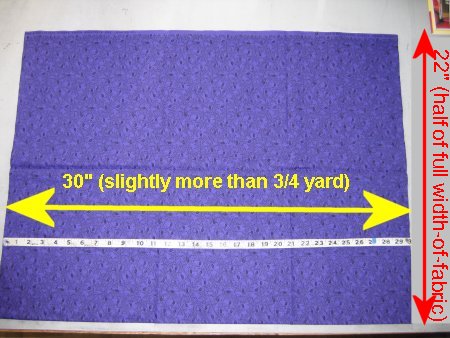
Once you have your 11" high yardage, make a mark (with your finger? a pin? a ruler? whatever) 9" from the right side. Fold towards the left on that mark. An alternative folding method was suggested by Barbara7885 and Becky/RabidQuilter of About.com's Quilting forum: simplify the folding by using a folding template! Cut a stiff piece of cardboard 9" by (at least) 13". One of the square acrylic rulers might also make a good folding template. Place the folding template on the extreme right-hand side of the fabric, aligning the bottom and right sides with the fabric. There will be a small piece of the template sticking out of the top. Pick up both the fabric and the folding template and flip them to the left. Continue flipping to the left until you've reached the end of the fabric. Using the excess height of the template as a grip, slide the template out from the book. The folding template will help you make very uniform books.
Although in a pinch, you could use the paper cores that bolts of fabric are wrapped around. I don't like to use them because they are "fat". They take up too much space when folding and leave a "hole" at the core of the book. Yes, the hole collapses when the book is put into your storage box, but it just upsets my sensibilities. :-) But if you have one and don't want to cut another template, it's a reasonable substitution.
Why 9"? Well, 1/4 yard is 9". Therefore every fold you make henceforth will be 1/4 yard. Every 4 folds is 1 yard. It is a very easy (and approximate) way of estimating how much yardage is folded up. I don't worry about folding precisely at 9" because as you fold, the book becomes incrementally larger. If you have enough yardage to fold, your resultant book absolutely will not remain at 9" wide; it will be wider. BUT ... it's still a good estimate.
The key is to create UNIFORM books ... of whatever size best suits your needs.
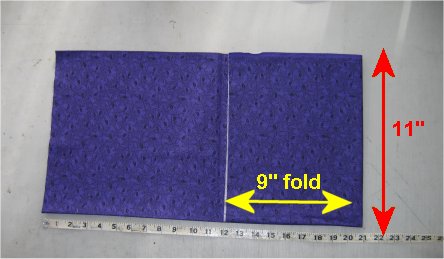
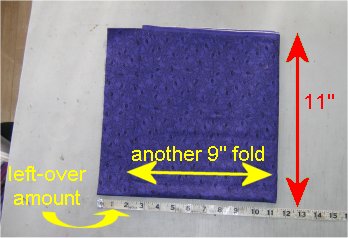

I've looked all over .... every store that carries storage containers for "just the right one". It had to fit my bookcase shelves. It had to be at least 9"x11" (preferably slightly larger) and no longer than 25", which is the length of my bookcase shelf. It needed to have a lid to keep out dust. It needed to be translucent so I could see what colors were inside.
Over time, I've found several that fit these requirements but the price kept me from buying all that I needed, so I'd buy one or two storage totes at a time. When I got more funds, I'd return to the store, only to usually find that they had DISCONTINUED that style or manufacturer. AARRRGGHHH! I hate it when that happens! As a result, I have several different styles of storage boxes, but they all have the above-mentioned characteristics.
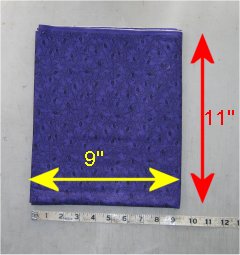
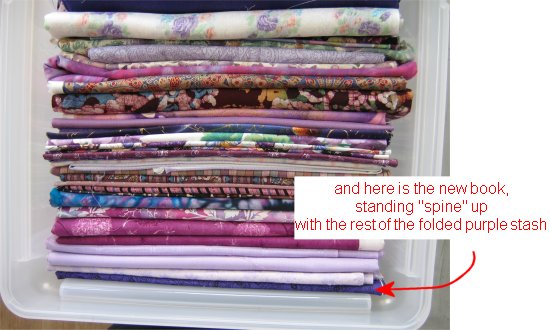
And then there's that purple and white star fabric on the shelf next to the storage box. Well, sometimes you just can't put everything you have into one storage box. If I have extra yardage (hopefully not too many pieces), I will simply stack them next to the storage box. That way they remain with others of the same color and I don't forget them.
